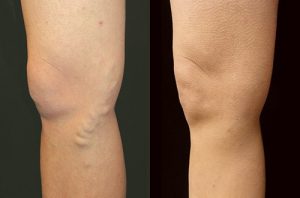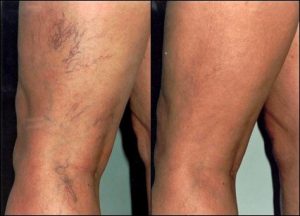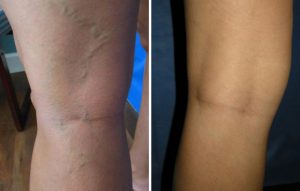Varicose socks for the treatment of leg pain and the correct way of wearing it
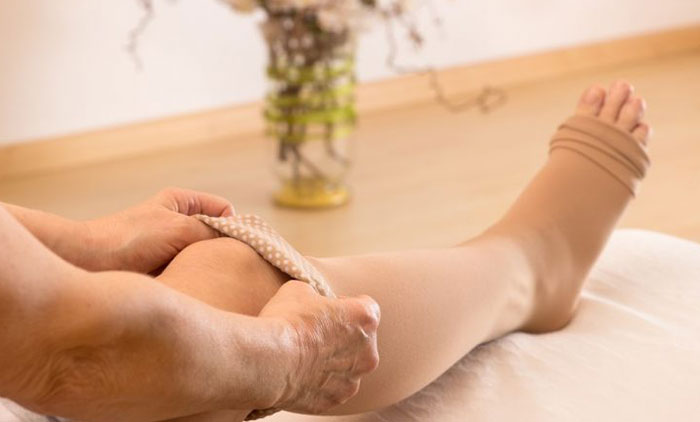
Compression stockings are an important tool in the treatment of varicose veins and venous insufficiency. Compression stockings are one of the most conventional and traditional and effective treatment options for varicose and spider veins. They help to alleviate the symptoms of venous disease, prevent blood clots, and are used for varicose vein treatment. Basically, they improve your blood flow. They can lessen pain and swelling in your legs. They come in different sizes and strengths, so you or your doctor will need to decide which option will work best.
What are compression stockings and how do they work?
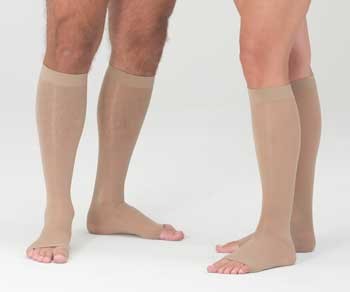
Compression stockings are an effective means of treating the symptoms of varicose and spider veins. They work by promoting the circulation of blood in the legs. That is, they assist in forcing the blood to flow back up to the heart. Most compression stockings are graduated, which means they have a decreasing strength of compression up the leg. By being tightest at the ankle, and having reducing compression strength up the leg, the blood is guided upwards away from the lower legs. The compression also squeezes on the veins which provide less area through which the blood can flow. This forces the rate of blood flow to increase.
These two effects work together to increase the flow of blood out of the legs to the heart, which in turn encourages freshly oxygenated blood to flow down from the heart in the arteries to replace the removed blood.
Compression stockings are able to help the body push the blood against the force of gravity back to the heart. In doing so, it is increasingly difficult for blood to make its way back down through the veins. This reduces the likelihood of developing varicose veins.
Compression not only helps to increase blood circulation and therefore reduce any varicose veins from appearing, but it also helps to reduce any existing varicose veins. By squeezing on the skin, the stockings are able to prevent any veins close to the surface of the skin from expanding. This eliminates the possibility of blood pooling and causing the veins to bulge.
It is very important to point out that compression stockings are not able to cure or eliminate varicose veins. They can help to relieve the symptoms and reduce the effects and degree of varicose veins. However they cannot treat the underlying causes of the venous insufficiency which is causing the varicose veins to form in the first place.
What they treat?

Compression stocking is highly effective for treatment of varicose veins; spider veins, blood clots, swelling and it can help relieve symptoms of varicose including tired and achy legs.
How are the Types of Compression Socks
There are a few different types of compression socks for varicose veins. They vary in two main ways: by length and by the strength of compression.
Strength of compression
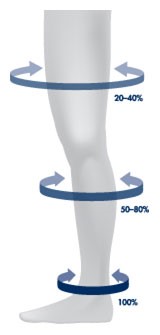
The amount of compression created by compression stockings is measured in millimeters of mercury (mmHg). Lower mmHg levels signify less compression, and higher levels of mmHg signify more compression.
- Mild Compression (8-15 mmHg): The lowest level available, these stockings are good for pregnant women who want to prevent the formation of varicose veins during their pregnancy.
- Moderate Compression (15-20 mmHg): Typically used by individuals suffering from varicose veins to reduce the pain caused by them and to prevent the spread of venous disease.
- Firm Compression (20-30 mmHg): Commonly used after varicose vein surgery to help prevent the return of varicose veins post-treatment.
- Extra Firm Compression (30-40 mmHg): The highest level available, these stockings are commonly prescribed after surgery to prevent the development of blood clots.
Length of stocking

The length of compression socks varies, however the most common lengths are knee-length and thigh-length. Compression socks also come as ankle length, although these are not appropriate for varicose veins. They also come as full-length pantyhose.
You’ll need to take different measurements depending on the style of compression stockings you want to purchase in order to get a pair that creates the proper amount of compression.
- Knee-high Compression Socks: You’ll need to measure your calf at its widest part and the length of your leg from your heel to the back of your knee.
- Thigh-high Compression Socks: You’ll want to measure the widest part of your calf, the widest part of your thigh, and the length of your leg from your heel to the highest part of your thigh.
- Compression Stockings: You’ll need to measure the length of your leg from your heel to the highest part of your thigh, the widest part of your calf, the widest part of your thigh, and the circumference of your waist.
Determining which length is most appropriate for you really depends on the area in which your varicose veins are developing. They are most common in the lower legs as this is the area that has the most gravity to work against, and so knee-length compression stockings for varicose veins are the most popular. However if the veins are bulging in the thigh area, then thigh-length will be more appropriate.
Instruction
How To Benefit Most From the compression socks?
For best results against varicose veins, you should wear your compression stockings all day, starting as soon as you wake up. They will not provide any effect when they are not worn, so you will want to wear them as much as possible. Wearing them at night while you sleep is however not recommended unless your doctor has advised you otherwise. While you sleep you are horizontal, which means the flow of blood no longer has to work against gravity. This makes wearing compression socks while you sleep less necessary
To ensure continuity of compression and best results, it is a good idea to have a second pair of compression stockings for when you need to wash. Also, compression stockings will start to lose their compression after a few months, and so if you are wearing them for extended periods, you will need to replace them every 4-6 months.
How to wear compression stockings?
It is a good idea to get into a routine when wearing these stockings. This means putting them on as soon as you get up in the morning and taking them off before you go to bed.
Elevate your legs when you have removed the stockings. This will ensure that blood will flow upwards towards your heart and keep your circulation functioning as normal.
Pull the stocking on over your leg and check that it fits correctly and that it compresses the parts of the leg it is designed to do. Do not roll the stocking down or allow it to do so as it will leave an impression on your leg which is also uncomfortable.
Wearing compression stockings for a long period of time will cause the skin on your legs to become dry and flaky. This can be avoided by applying a moisturizing cream to your legs.

